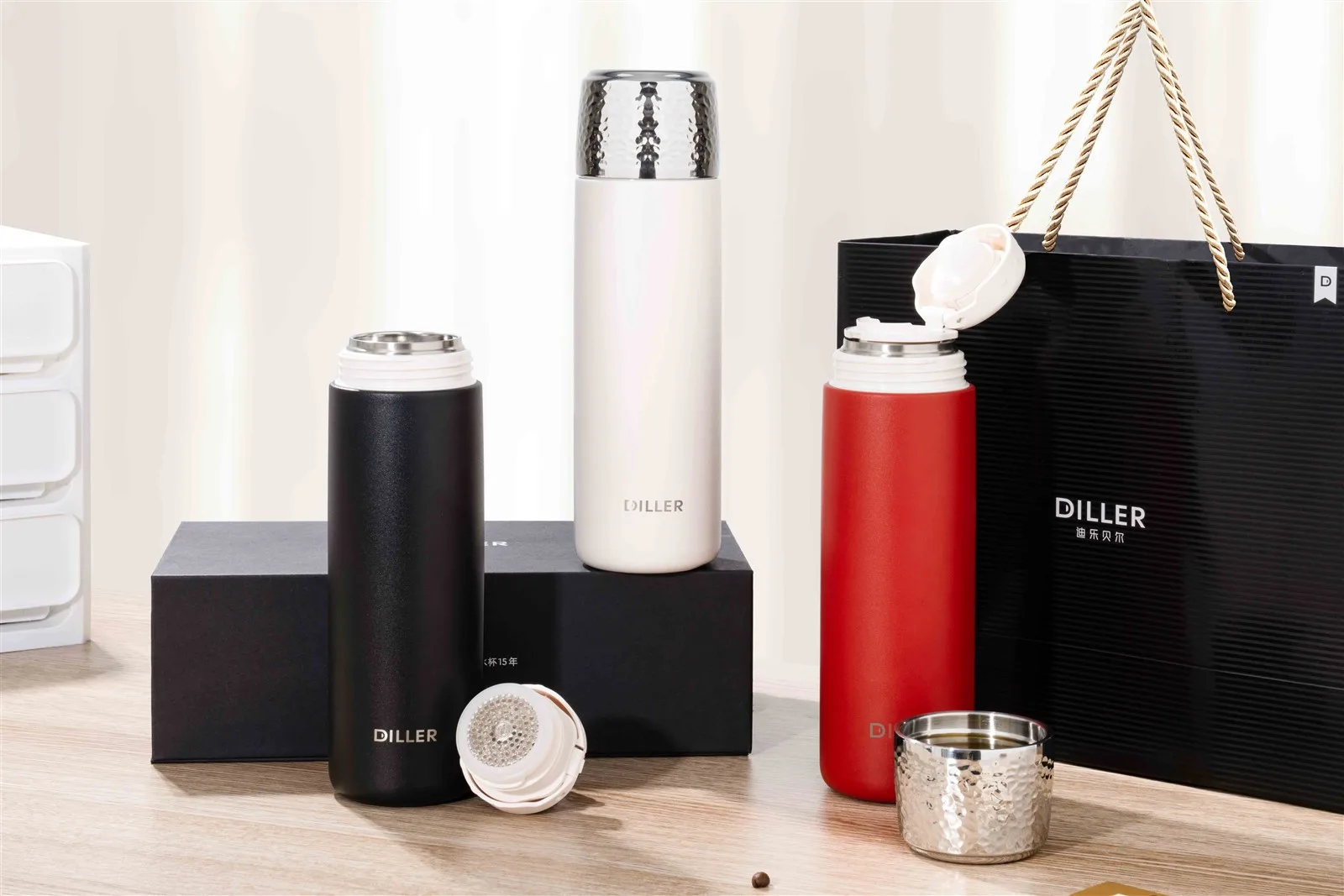Maintenance methods
During use, collision and impact should be avoided to avoid damaging the cup body or plastic, causing insulation failure or water leakage. When tightening the screw plug, use appropriate force and do not rotate excessively to avoid screw buckle failure. When drinking coffee, tea, or beverages frequently, the inner lining may discolor, which is a normal phenomenon that can be removed with toothpaste and a toothbrush.
The way to distinguish
Three Ways to Identify the Advantages and Disadvantages of Insulating Cup
The quality of insulation cups in the market varies, how can ordinary consumers distinguish between good and bad? Industry insiders suggest that the focus should be on the insulation performance of its inner liner structure, the sealing degree of the cup cap and bottle body, and whether the material releases harmful substances. Specifically, it can be identified through three methods.
Technique 1: Identification of Inner Liner Insulation. This is the main technical indicator of an insulation cup. After filling it with boiling water, tighten the bottle stopper or lid clockwise, and wait for 2-3 minutes to touch the outer surface and lower part of the cup body with your hand. If obvious warming is found on the cup body and upper part of the cup body, it indicates that the inner liner has lost its vacuum and cannot achieve good insulation effect.
Technique 2: Identify sealing performance. Fill a glass of water and invert it for four to five minutes. Tighten the lid, place the cup flat on the table, or vigorously shake it a few times. If there is no leakage, it indicates good sealing performance; In addition, it is also necessary to check whether the rotation between the cup lid and the cup mouth is flexible and whether there is a gap.
Technique 3: The environmental protection identification of plastic accessories is also a noteworthy issue. It can be identified by smelling. If the cup is made of food grade plastic, it has a smaller odor, a shiny surface, no burrs, long service life, and is not prone to aging; Ordinary plastic or recycled plastic has a strong odor, a dark color, many burrs, and is prone to aging and fracture.
Instructions for use
1. Before using a new product, it is necessary to use boiling water (or add some food detergent to scald several times and undergo high-temperature disinfection)
2. Before use, please preheat (or pre cool) with boiling water (or cold water) for 5-10 minutes to achieve better insulation effect.
3. Please do not overfill the water to avoid scalding caused by the overflow of boiling water when tightening the cup lid.
4. Please drink slowly when hot to avoid burns.
5. It is not advisable to keep drinks such as milk, carbonated drinks, and fruit juice for a long time.
6. After drinking, please tighten the cup cover to ensure hygiene and cleanliness.
7. When cleaning, it is advisable to use a soft cloth and a food detergent diluted with warm water. Do not use alkaline bleach, metal vegetable cloth, chemical cloth, etc.
8. Sometimes, the inner side of a stainless steel cup may produce some red rust spots due to the influence of substances such as iron in the contents. It can be soaked in warm water and diluted vinegar for 30 minutes, and then thoroughly cleaned.
9. To prevent the generation of odors or stains and ensure long-term clean use. After use, please clean and dry thoroughly.
Make tea
Insulation cups are mostly sealed for insulation. Due to the structure of tea leaves, they will be fermented in a sealed environment, and the fermented tea will produce some harmful substances to the human body. Tea is rich in nutrients such as protein, fat, sugar, vitamins, and minerals. It is a natural health beverage, which contains tea polyphenols, caffeine, tannins, tea pigments, and has various pharmacological effects. Tea leaves are soaked in high temperature water for a long time, just like boiling over a warm fire. Tea polyphenols, tannins, and other substances will be leached out in large amounts, making the tea color strong and bitter.
Nutrients such as vitamin C are destroyed when the water temperature exceeds 80 ℃, and prolonged high-temperature soaking can cause excessive loss, thereby reducing the health function of tea.
At the same time, due to maintaining a high water temperature, the aromatic oil in tea will quickly evaporate in large quantities, and tannic acid and theophylline will seep out in large quantities. This not only reduces the nutritional value of tea, reduces the aroma of tea, but also increases harmful substances. If consumed for a long time, it can harm health and lead to various diseases of the digestive, cardiovascular, neurological, and hematopoietic systems.


